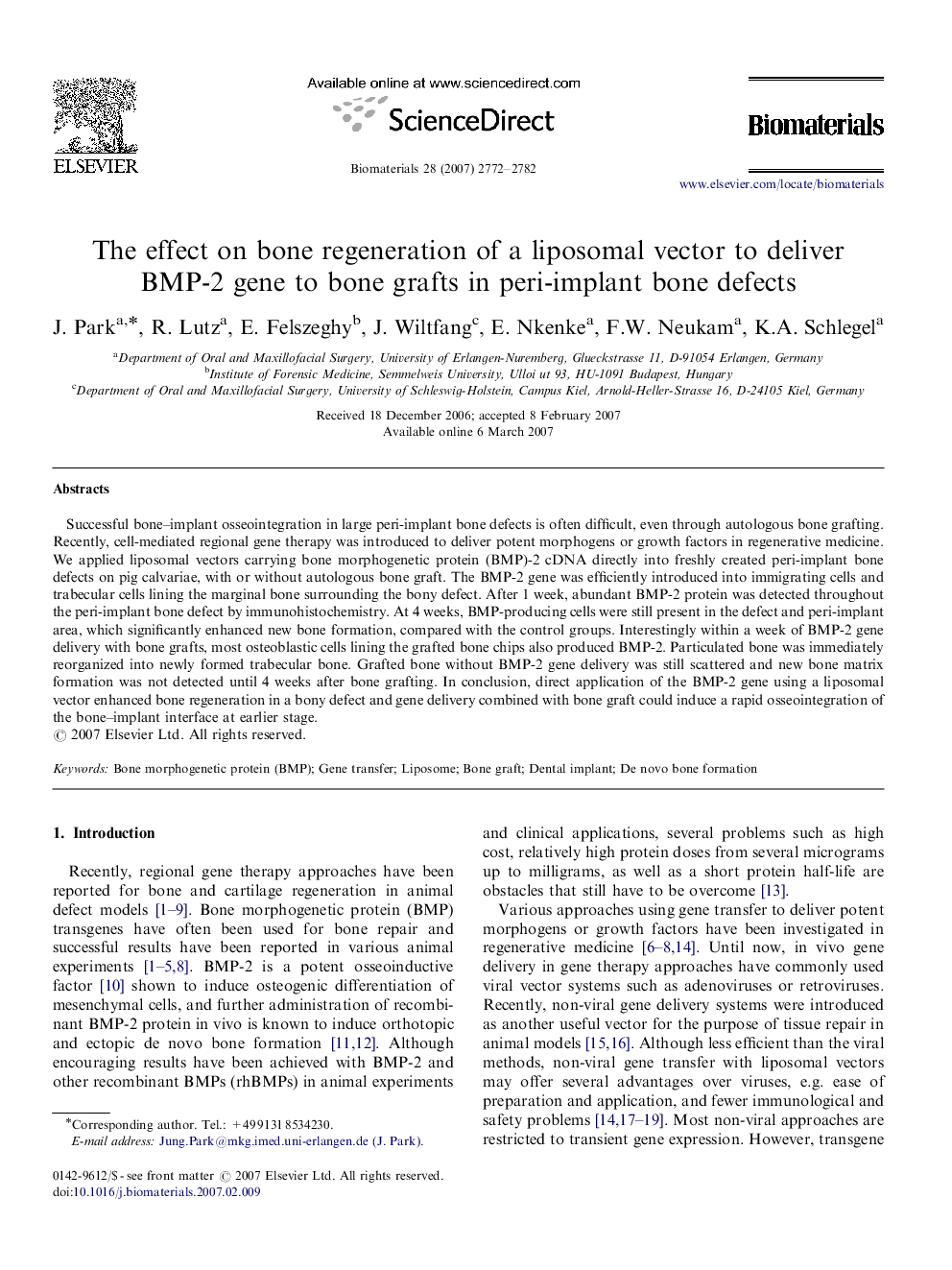| Article ID | Journal | Published Year | Pages | File Type |
|---|---|---|---|---|
| 10958 | Biomaterials | 2007 | 11 Pages |
sSuccessful bone–implant osseointegration in large peri-implant bone defects is often difficult, even through autologous bone grafting. Recently, cell-mediated regional gene therapy was introduced to deliver potent morphogens or growth factors in regenerative medicine. We applied liposomal vectors carrying bone morphogenetic protein (BMP)-2 cDNA directly into freshly created peri-implant bone defects on pig calvariae, with or without autologous bone graft. The BMP-2 gene was efficiently introduced into immigrating cells and trabecular cells lining the marginal bone surrounding the bony defect. After 1 week, abundant BMP-2 protein was detected throughout the peri-implant bone defect by immunohistochemistry. At 4 weeks, BMP-producing cells were still present in the defect and peri-implant area, which significantly enhanced new bone formation, compared with the control groups. Interestingly within a week of BMP-2 gene delivery with bone grafts, most osteoblastic cells lining the grafted bone chips also produced BMP-2. Particulated bone was immediately reorganized into newly formed trabecular bone. Grafted bone without BMP-2 gene delivery was still scattered and new bone matrix formation was not detected until 4 weeks after bone grafting. In conclusion, direct application of the BMP-2 gene using a liposomal vector enhanced bone regeneration in a bony defect and gene delivery combined with bone graft could induce a rapid osseointegration of the bone–implant interface at earlier stage.
